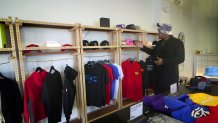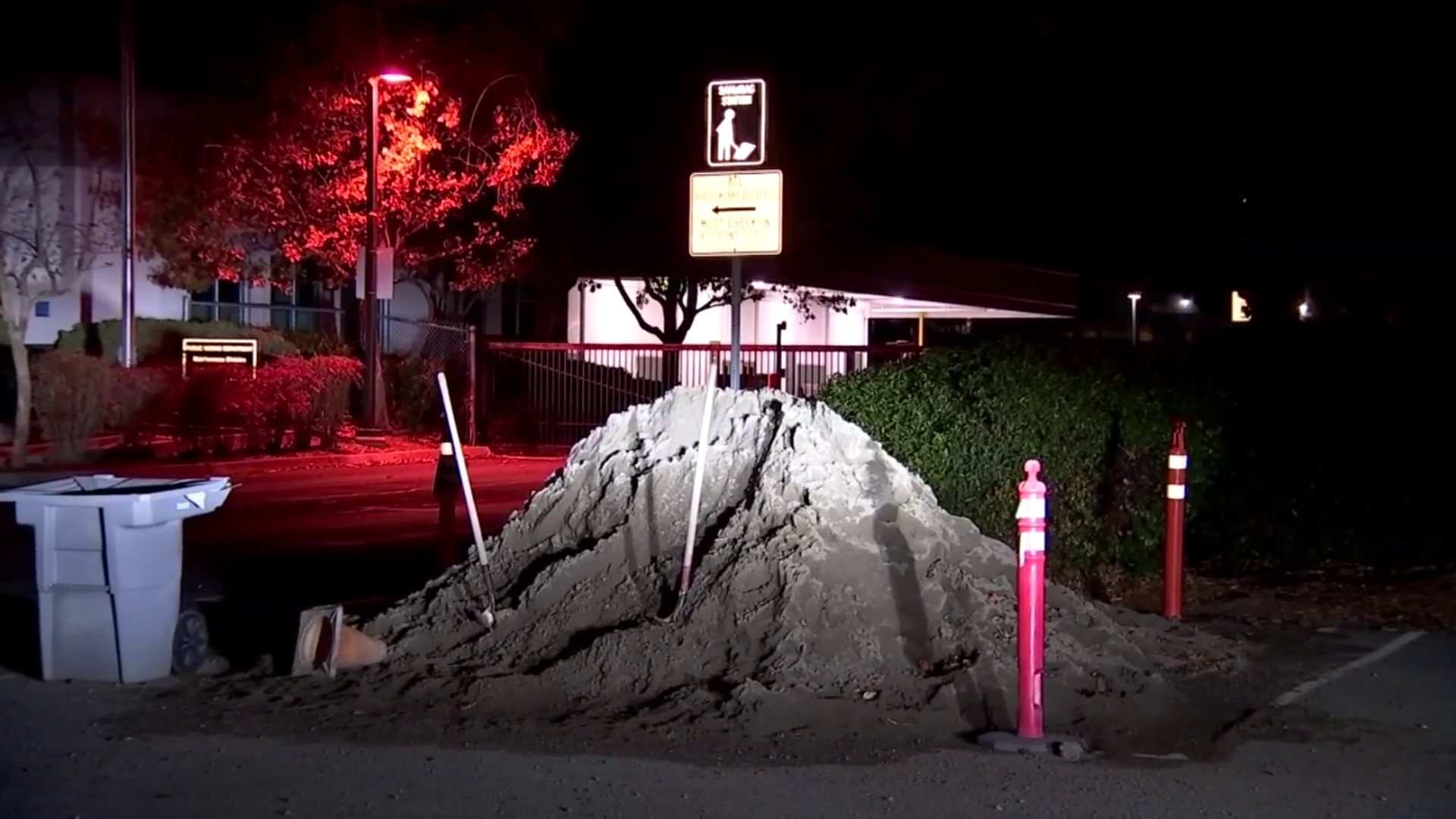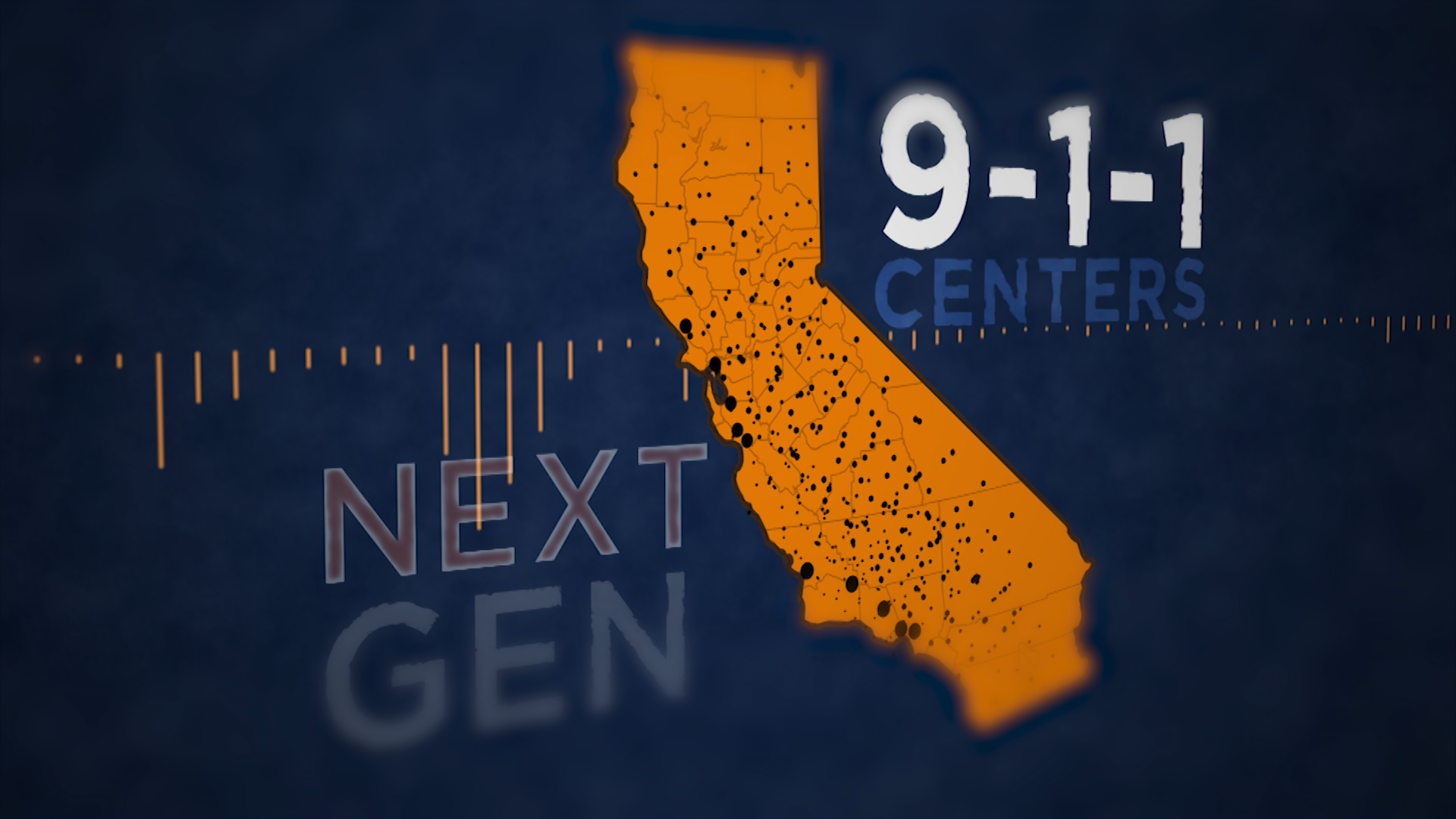The intersection of Geary and Fillmore in San Francisco's Western Addition is something of a waypoint on the city's historical map; Jim Jones's infamous People's Temple once stood a block away, Japantown sits on its northern edge and The Fillmore auditorium, a musical temple, looms over the intersection.
The neighborhood was once nicknamed the Harlem of the West, thriving with Black-owned businesses until redevelopment in the 1960s and 1970s uprooted many of those families, never to return.
Now in a street level storefront just below the famous Fillmore auditorium sign, a new business is hoping to incubate a new generation of Black-owned businesses along Fillmore Street, a roadway that intersects through numerous neighborhoods and demographics.
"I used to walk past this corridor all the time and it used to be a Money Mart check cashing place," said Pia Harris, program director with the San Francisco Housing and Development Corporation, a non-profit group founded in the 1980s to try and blunt the cultural damage of redevelopment.
In the former site of that Money Mart at Geary and Fillmore, Harris and SFHDC founded In the Black, a new shared-space business aimed at creating business opportunities for local African-American entrepreneurs. Eighteen businesses now share space on the showroom floor, selling everything from clothing to handmade jewelry to locally crafted soda pops.
"We are making sure African-American businesses have a place to try out their concepts and sell their products," Harris said.
The Fillmore was once known for its ubiquitous Black-owned jazz clubs, churches and homes. Nicole Williams grew-up in the Fillmore -- immersed in those tales of the area's glory days.

My mother and my grandmother told stories," said Williams, "about how the neighborhood was all filled with Black and Japanese residents."
Local
Get a weekly recap of the latest San Francisco Bay Area housing news. Sign up for NBC Bay Area’s Housing Deconstructed newsletter.
William's business Belle Noire now occupies space within In the Black, selling clothing and accessories from the African Diaspora, representing women makers from Kenya, Ghana, Senegal and Sierra Leone among others.
"My hope is this is just the beginning," said Williams, "that In the Black is really just a seed and that we grow and flourish."
Harris said the pandemic hit Black-owned businesses especially hard with many failing to secure government funding aimed at propping up businesses. Harris blamed the problem on African-American businesses lacking the resources to properly apply for funding, while many others were simply turned down.
Since opening late last year, the store has already fulfilled at least part of its mission of bringing many more Black-owned businesses to Fillmore.
"Prior to In The Black there were only 15 black owned businesses on the corridor," said Harris. "So now In The Black, we were able to over double that with 30 something businesses."
Fillmore resident Prince Dean was aboard a plane when a glance out the window inspired him to start his clothing business Cloud Surfing, with its motto "when they go low, we go high." His shop within In The Black sells shirts, sweaters, hats and jean jackets emblazoned with his Cloud Surfing logo.
"I see that this being a beacon of hope and light for the youth and us to be able create businesses," said Dean, "and show the world it can happen start here in the Fillmore."
Next to Dean's clothing space sits Joseph Broussard's Dreamer Boyz clothing, with his Third Eye caps, hoodies and T-shirts. Also a Fillmore native, Broussard got caught-up in the Western Addition's rough edges, losing a brother several years ago to gun violence.
"Because me in my past, I’m not supposed to be here," said Broussard holding up a purple Dreamer Boyz sweatshirt. "So for me to get this opportunity and be a part of the Fillmore legacy is phenomenal."
SFHDC, which funded the project along with the City of San Francisco, envisions the project spreading to other neighborhoods and perhaps other cities. But more immediately, there's hope it bring back a glimmer of the glory days of the neighborhood.
"I think this is a bold statement," said Williams, "saying that the glory days of Fillmore are coming back."



